This is part of a blog series about European graphic novels. See this blog post for a small introduction.
Valerian and Laureline is among my most treasured space and science fiction stories, right up there with monster franchises such as Star Trek, Star Wars, Blade Runner, 2001: A Space Odyssey, Futurama and probably a hundred more. The stories of adventure, diplomacy and exploration are really intriguing, at least up until the two city books. The way this series was drawn left me in awe right from the beginning, and it still does. No doubt it has inspired a lot of other media since, especially Star Wars.
If you are new to European graphic novels, this series is an excellent introduction.
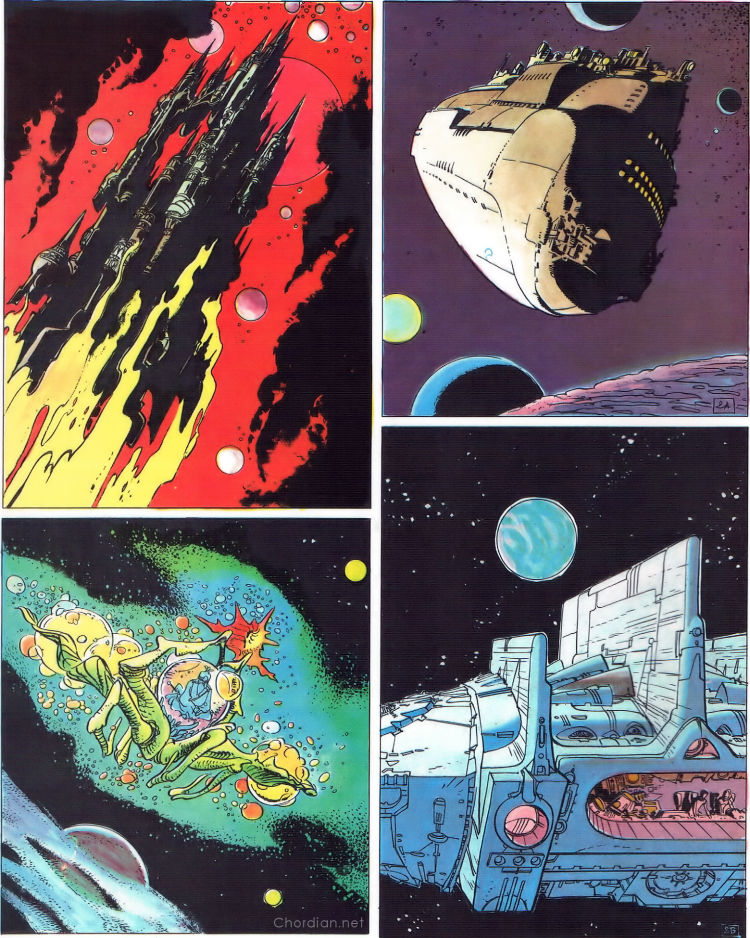
The series is about two spatio-temporal agents, Valerian and Laureline. They belong to Galaxity, the capital of Earth in the 28th century. Their most important task is to make sure that no one uses time travel to change the course of history, but also for Earth to establish contact with new civilizations. To help them with these tasks they are in control of a saucer-shaped astroship that can jump in both space and time, sort of like teleporting. The technology in the series is much closer to Star Wars than Star Trek; overly detailed and dirty, sometimes even breaking down. Taking care of their duty usually turns out to be a complicated matter that brings them on an adventurous and meandering path, typically with a lot of bizarre beings and a constant sense of wonder. The series is very imaginative and still have awesome science fiction ideas I have yet to see anywhere else.
Writer Pierre Christin and artist Jean-Claude Mézières originally created the French series in 1967 and kept it running until 2010, creating some 21 novels. The stories were a bit cliche and naive in the beginning, but as more novels came out the themes became much more sophisticated. Especially the relationship between Valerian and Laureline evolves as he becomes more anti-heroic and insecure while she grows more obstinate and feministic. The stories themselves also get increasingly experimental while never losing the epic feel and the fascinating sense of wonder. At least until the city books.
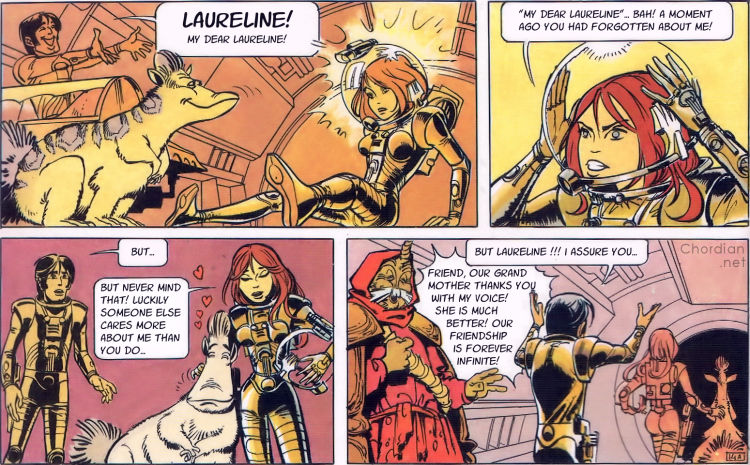
So what is it with me and those city books?
Well, chronologically the novels more or less begin in The City of Shifting Waters, Empire of a Thousand Planets, World Without Stars and Welcome to Alflolol, with some cliche good-and-evil adventure, relatively simple diplomatic stories, and that great sense of wonder. It’s not entirely without a feeling of watching something out of the Flash Gordon multiverse. In Birds of the Master, the duo is stranded and then enslaved and terrified by birds of madness – a bleak but fascinating tale.
This is followed by Ambassador of the Shadows which is probably my favorite novel in the entire series. Valerian and Laureline visits Point Central, a vast space station that acts as a meeting place for all the races of the cosmos. Here, Valerian and an ambassador are kidnapped, forcing Laureline to go searching for them. Her adventures through the enormous space station is among the most fascinating pieces of science fiction I have ever read. Just take a look at this:
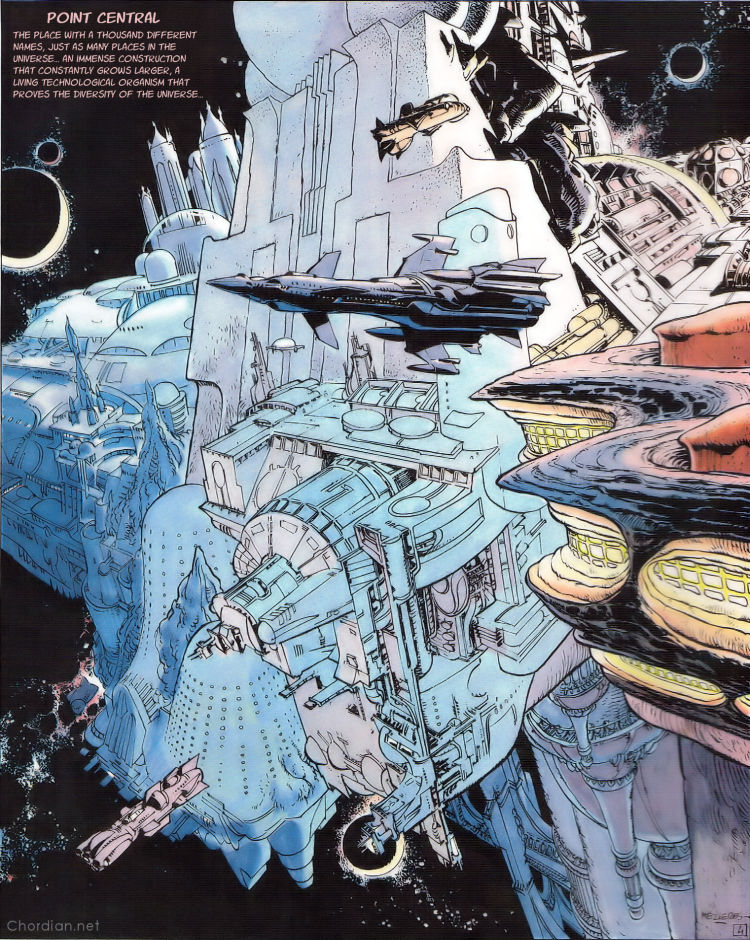
The series continues on strongly with On the False Earths, where Valerian is put through humiliating deaths in bizarre recreations of Earth history. At this point, it’s clear that the creators of the series wanted to make the story even more advanced. I had a hard time understanding it when I first read it as a child. The next novel, Heroes of the Equinox, feels like some sort of parody on the superhero theme, with Valerian taking part in an uneven race against three powerful champions.
And then the two city books arrived – Métro Châtelet, Direction Cassiopeia, followed by Brooklyn Station, Terminus Cosmos. The first couple of times I read these, I didn’t really like them. Valerian stranded on Earth in the 80’s with headaches, constantly belittled by Laureline in their clairvoyant radio conversations. Laureline searching for hints to help Valerian find monsters out of time felt a wee bit too intellectual for my liking. But as time went by, I grew to like it for what it was.
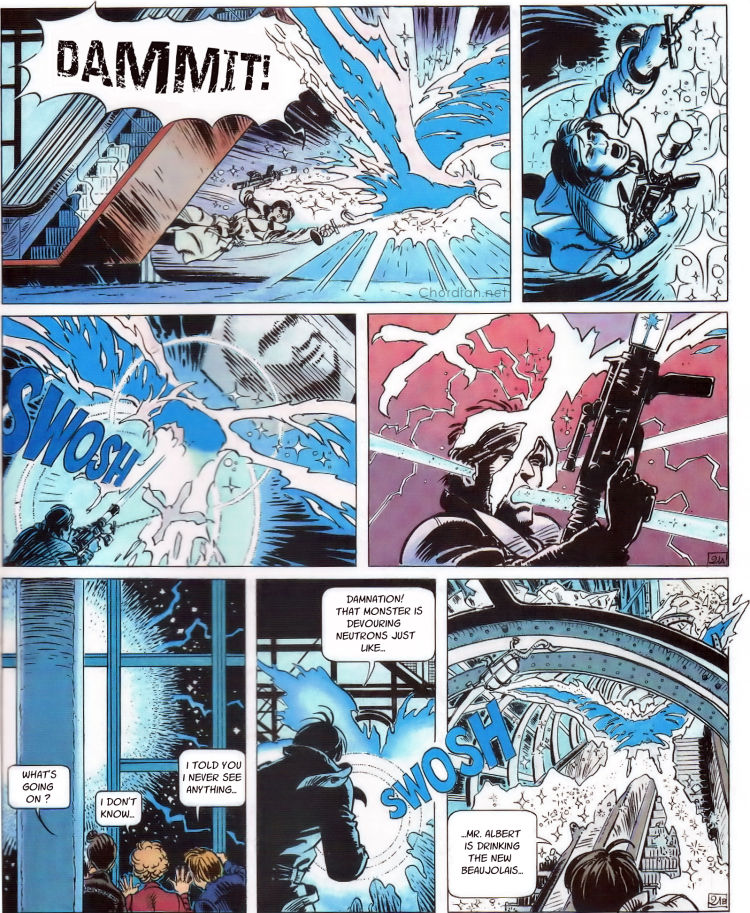
And then something happened. Something bad.
From The Ghosts of Inverloch and onward, the series completely lost its magic. From being a groundbreaking science fiction series copied and envied by movies and books throughout time, it turned into nothing but a nostalgic family reunion project. Valerian and Laureline constantly runs into former “friends” – some which really should have been left behind in their original stories – and the stories themselves also felt almost nonsensical. This is the line of novels that proves to me that everyone loses their mojo at one point. Paul McCartney lost it. Stevie Wonder lost it.
So did Pierre Christin and Jean-Claude Mézières.
But that doesn’t really matter to me. The first 8-10 novels are still magnificent to say the least. I sometimes read them for the umpteenth time, pondering how far ahead of their time they actually were. It’s no wonder that they probably inspired Star Wars as much as they did.
In fact, my next blog post about comics will be about this.
Check out these example pages selected from various novels in the series:


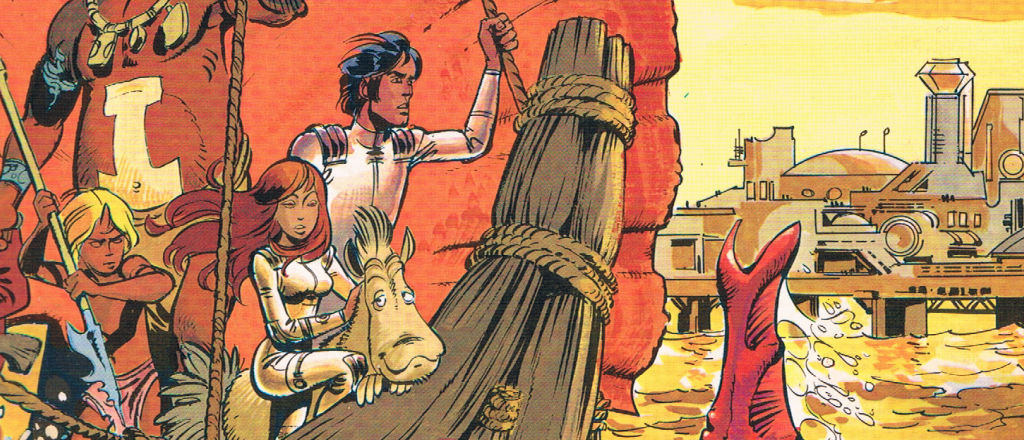
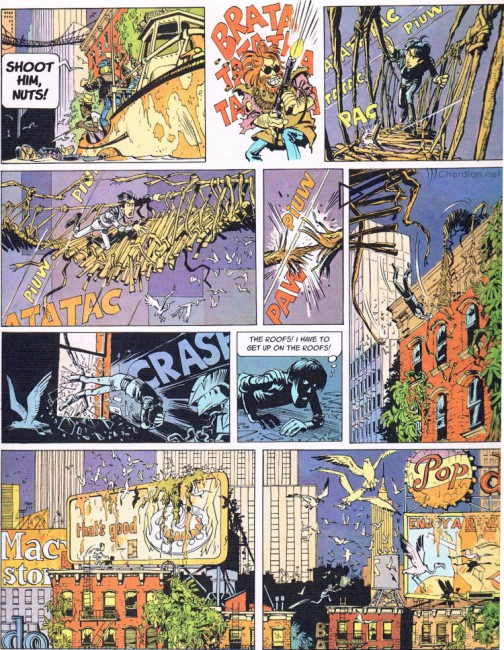
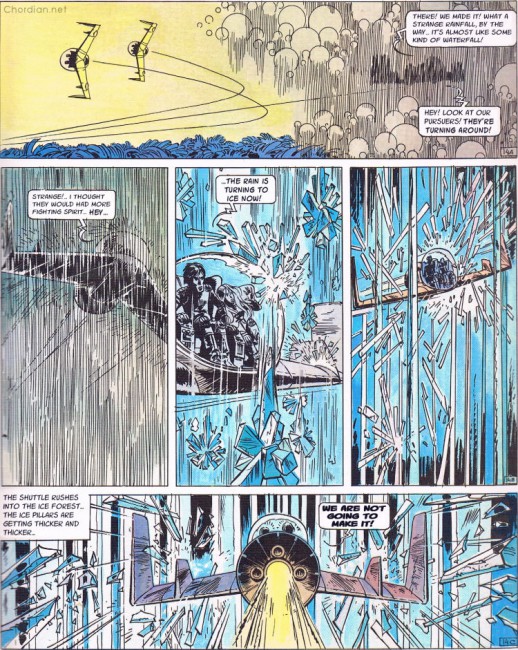
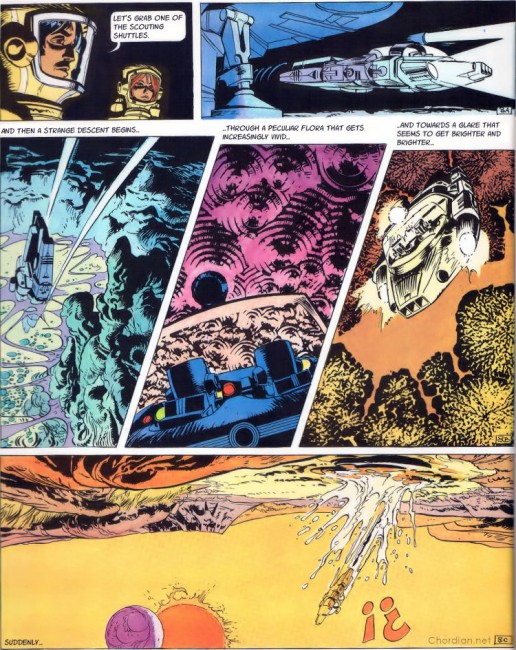
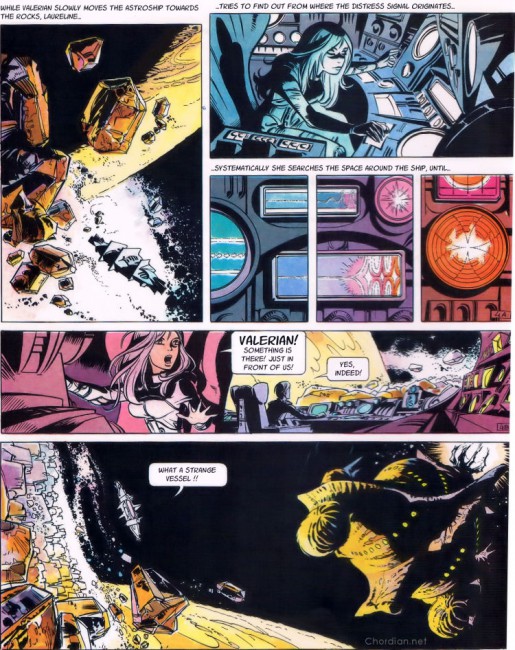
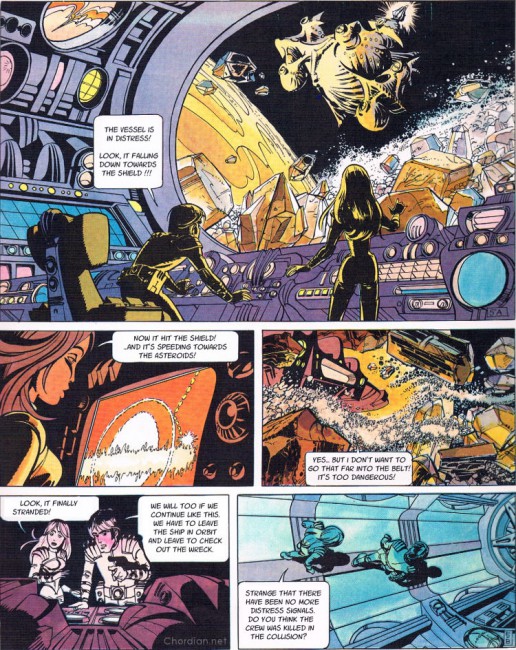
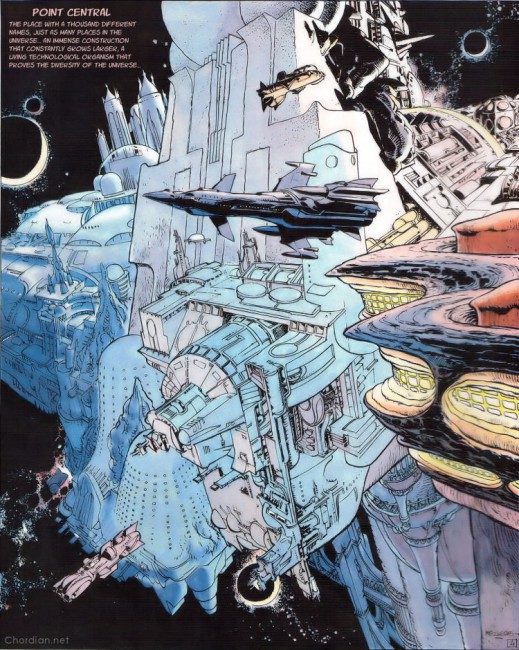
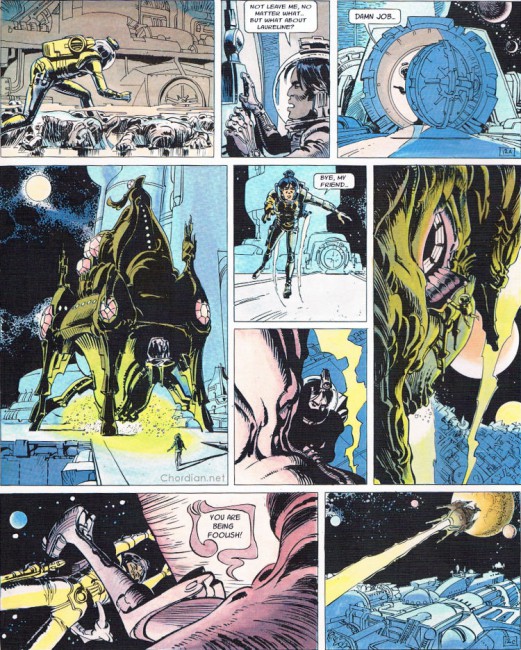
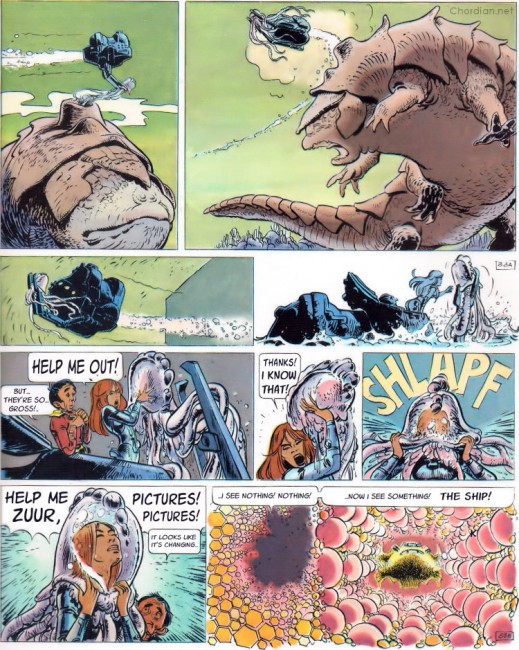
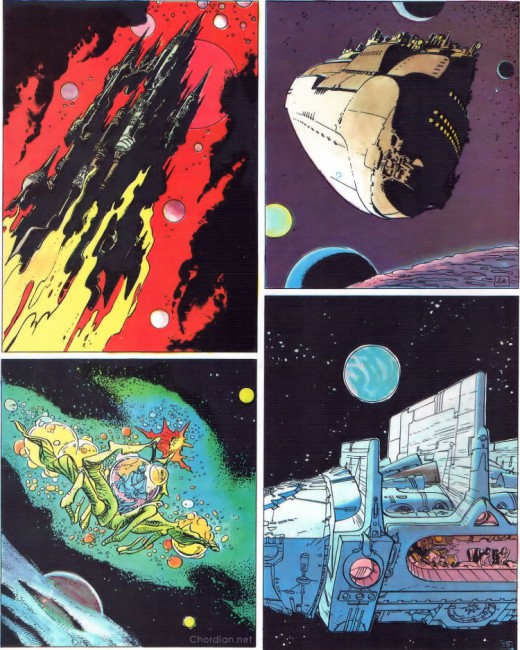
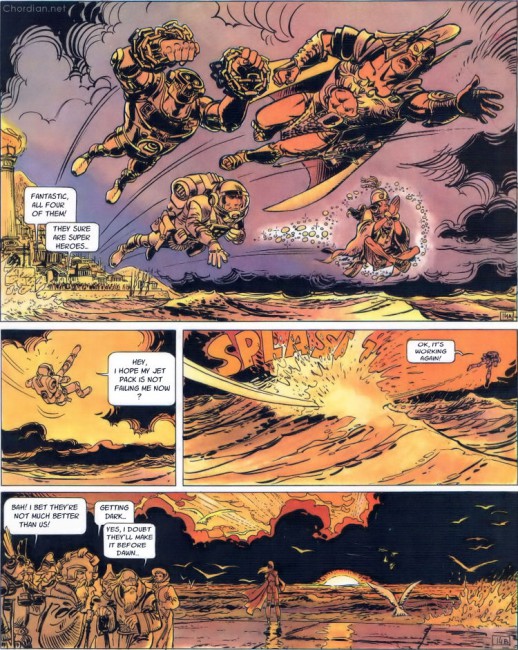
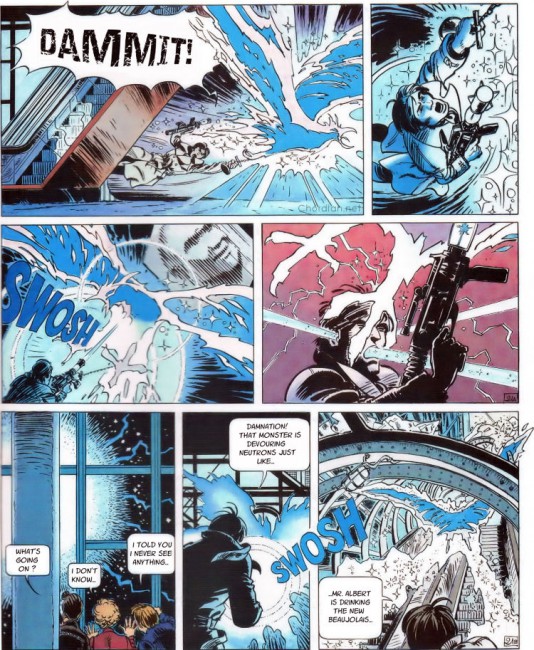
These two were “Linda & Valentin” in the danish translations? Or is that another series?
Yep. And Luc Besson (Subway, Nikita) is working on a movie based on Empire of a Thousand Planets, to be released in 2017.